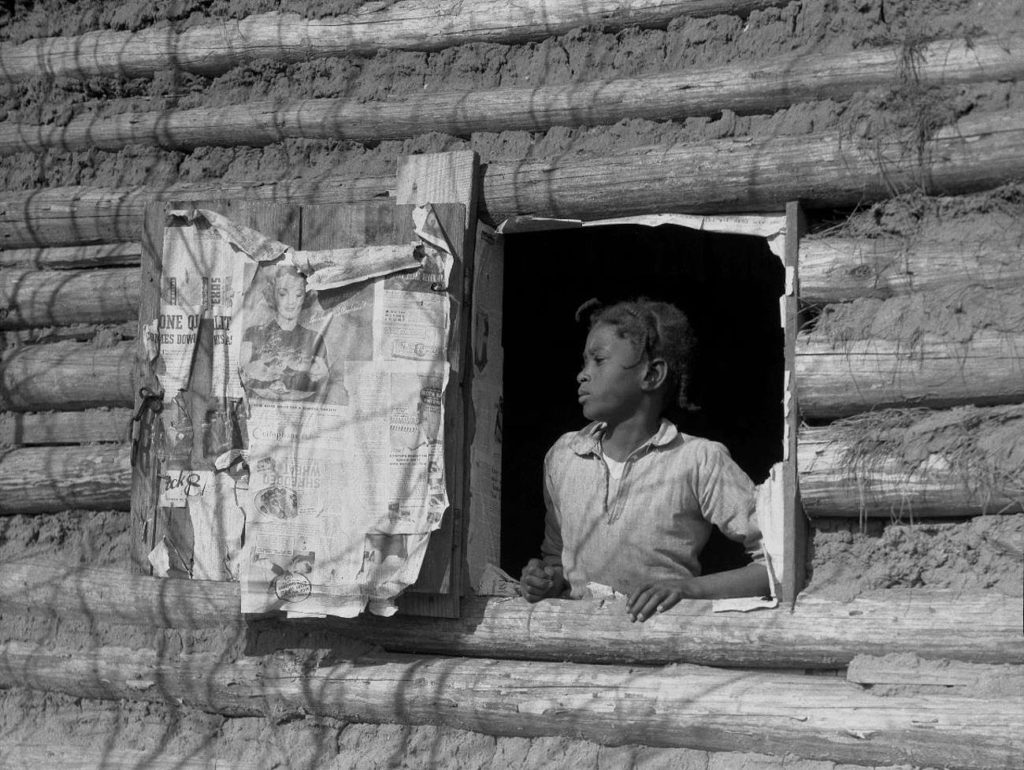Editor’s Note: An account of the day of the Lynyrd Skynyrd plane crash after it went down and what happened afterwards.
Amazing.
Listen to 11:05 thru 18:25.
NOT SO BLACK AND WHITE
Text by Bruce Berman, Site Editor
“You see the girl — that’s effect one. You see the ad [the blond woman] — that’s effect two. But the third effect is when you see both images together and recognize the irony.” — Arthur Rothstein on the photo
It’s a beautiful photograph, no doubt. Rule of thirds composition. Great light creating great texture. Juxtaposition of the printed rumpled paper against the real person, Black tones versus light tones, i.e., contrast. The slightly diagonal lines and the pattern they create. Textbook rules of composition. But, of overwhelming importance, of course, the implied comment and intention of the photograph.
Arthur Rothstein understood and believed in the power of photography to make social commentary. Working for the United States government, Rothstein photographed Artelia Bendolph in Alabama, to illustrate the effects of the Bankhead-Jones Farm Tenancy Act of 1937.
Of course -and this is NEVER supposed to be asked when discussing the iconic FSA project- should someone working for the government EVER be allowed to use their words or photographs to “make social commentary?” Isn’t that the realm of commentators in the news industry, i.e., non tax paid?
WE LOVE WHAT’S REAL
1950 Kodak Duaflex camera by Kodak
Text/Photography by Bruce Berman
The Kodak Duaflex is a 620 roll film pseudo TLR made by Kodak in the US, Canada, and UK. The original versions were available from December 1947 – September 1950 in the US, and 1949-1955 in the UK; the Duaflex IV was finally discontinued in the US in March 1960.
It was real.
If film is still made it will shoot. It feels good in the hand and the eye.
It is not plastic.
The Morgue (The Good One!)
You got to love paper. And aging. And photos. And writing.
Yes, it’s all in the “database” there, at the end of the keyboard, through Google. But is it?
Even if it is it has no texture, no odor, no reality.
Take this trip to The New York Times Morgue. A perfectly wonderful place to spend a lifetime.


